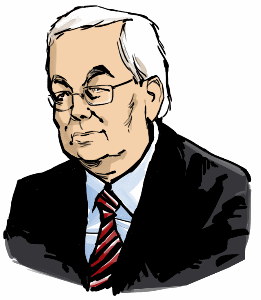© Gunnar Tómasson
25. ágúst 2017
I. Alfa og Omega Sturlu þáttar Þórðarsonar
(Sturlu þáttr, 1. og 3. k.)
238299
Alfa
20678 = Nú er þar til máls at taka, er fyrr var frá horfit,
17595 = at Sturla reið heim vestr til sveita.
12486 = Átti hann nú bú at Staðarhóli,
19154 = en Hrafn gerði bú í Stafaholti með ráði Sturlu.
Omega
9837 = Sturla gerði bú í Fagrey,
22273 = en fekk Snorra, syni sínum, land á Staðarhóli til ábúðar.
13674 = Sat Sturla þá í góðri virðing,
24239 = þar til er hann andaðist einni nótt eftir Óláfsmessudag.
27536 = Var hann ok Óláfsmessudag fyrst í heim ok Óláfsmessudag síðast.
17523 = Hann var þá nær sjautugr, er hann andaðist.
13252 = Var líkami hans færðr á Staðarhól
18342 = ok jarðaðr þar at kirkju Pétrs postula,
21710 = er hann hafði mesta elsku á haft af öllum helgum mönnum.
238299
II. Apostle Peter alias Will Shakspere gent.
(King James Bible and Shakespeare Myth)
35698
Dead Father
(Creation Myth)
-10 = Father/Ten-Speaking Head
Mythical
William Peeter
5975 = Simon Peter – Earthly Understanding
-5829 = Simon bar Iona – Spiritual Wisdom
Mythical Stratfordian
(Holy Trinity Church “Records”)
Baptismal name and date
17252 = Gulielmus filius Johannes Shakspere
2602 = 26 April – 2nd month old-style
1564 = 1564 A.D.
35698
I + II = 238299 + 35698 = 273997
IV + V + VI = 18247 + 142586 + 113164 = 273997
III. Svá hefir Sturla lögmaðr sagt¹
(Grettissaga, 93. kafli)
273997
25951 = Hefir Sturla lögmaðr svá sagt, at engi sekr maðr þykki honum
24513 = jafnmikill fyrir sér hafa verit sem Grettir inn sterki.
15728 = Finnr hann til þess þrjár greinir.
23501 = Þá fyrst, at honum þykkir hann vitrastr verit hafa,
22841 = því at hann hefir verit lengst í sekð einnhverr manna
15979 = ok varð aldri unninn, meðan hann var heill;
21611 = þá aðra, at hann var sterkastr á landinu sinna jafnaldra
21697 = ok meir til lagðr at koma af aftrgöngum ok reimleikum
5070 = en aðrir menn;
19024 = sú in þriðja, at hans var hefnt út í Miklagarði
20288 = sem einskis annars íslenzks manns, ok þat með,
20657 = hverr giftumaðr Þorsteinn drómundr varð
18975 = á sínum efstu dögum, sá inn sami, er hans hefndi.
18162 = Lýkr hér sögu Grettis Ásmundarsonar.
273997
IV. William Peeter’s Murder²
(Shakespeare Myth)
18247
Killer
6642 = Edward Drew
Victim
7482 = William Peeter
Date
2511 = 25 January – 11th month old-style
1612 = 1612 A.D.
18247
V. A Funeral Elegy for Maister William Peeter²
(W.S. – First eight lines; original spelling)
142586
14718 = Since Time, and his predestinated end,
16856 = Abridg’d the circuit of his hope-full dayes;
20211 = Whiles both his Youth and Vertue did intend,
16907 = The good indeuor’s, of deseruing praise:
15453 = What memorable monument can last,
18496 = Whereon to build his neuer blemisht name?
24860 = But his owne worth, wherein his life was grac’t?
15085 = Sith as it euer hee maintain’d the same.
142586
VI. World Soul – Vefr Darraðar – Spiritual Wisdom
(Platonic-Augustan-Saga-Shakespeare Myth)
113164
105113 = World Soul³
Strife
5415 = Vefr Darraðar – Web of Fate, Brennu-Njálssaga and Egils Saga
Advancement of Learning
Francis Bacon – Book Title, 1605
(Construction G. T.)
4000 = Flaming Sword – Cosmic Creative Power
-6960 = Jarðlig skilning – Earthly Understanding
5596 = Andlig spekðin – Spiritual Wisdom
113164
***
Calculator for converting letters to cipher values is at:
http://www.light-of-truth.com/ciphersaga.htm
¹Translation
(William Morris & Eirikr Magnusson, 1900)
Now Sturla the Lawman says so much as that he deems no outlawed man ever to have been so mighty as Grettir the Strong; and thereto he puts forth three reasons
And first in that he was the wisest of them all; for the longest in outlawry he was of any man, and was never won whiles he was hale.
And again, in that he was the strongest in all the land among men of a like age; and more fitted to lay ghosts and do away with hauntings than any other.
And thirdly, in that he was avenged out in Micklegarth, even as no other man of Iceland has been; and this withal, that Thorstein Dromund, who avenged him, was so lucky a man in his last days.
So here ends the story of Grettir Asmundson
²William Peeter And W. S. – Extract
(G.T. Working note, 20 June 2002)
Today’s edition of The New York Times carries an article by William S. Niederkorn entitled ‘A Scholar Recants on His ‘Shakespeare’ Discovery’. The first four paragraphs read as follows:
In 1995 Donald Foster, a professor of English at Vassar College, made a startling case for Shakespeare’s being the author of an obscure 578-line poem called “A Funeral Elegy.” After a front-page article about his methods of computer analysis in The New York Times – and after his reputation was further burnished by unmasking Joe Klein as the author of “Primary Colors” – the poem was added to three major editions of Shakespeare’s works.
Now, in a stunning development that has set the world of Shakespeare scholarship abuzz, Professor Foster has admitted he was wrong. In a message dated June 12 and quietly left last Thursday on the Internet discussion group Shaksper (www.shaksper.net), he said that another poet and dramatist was the more likely author of the poem. He was joined in his recantation by Richard Abrams, a professor of English at the University of Southern Maine, who has been his close associate in the Shakespeare attribution. In their message, both conceded the main point of an article in the May issue of The Review of English Studies by Gilles D. Monsarrat, a professor of languages at the University of Burgundy in France, a translator and editor of Shakespeare’s works in French, and a co-editor of “The Nondramatic Works of John Ford.”
The article compares the text of the poem with Ford’s known work and concludes that the writing is Ford’s. Professor Monserrat’s method seems to derive from a close reading of the texts, rather than the kind of computer analysis Professor Foster uses.
John Ford (1566-1640) is best known for his later dramatic works, like “’Tis Pity She’s a Whore,” but earlier he was a writer of memorial verse.
The article does not address the $64 question: Why might John Ford’s elegy have been published under the nom de plume initials “W. S.” – the initials of William Shakespeare?
For this long-time student of the ‘mechanics’ used by Francis Bacon and associates for placement on the record of the Shakespeare Opus, the fact that John Ford also wrote an elegy in memory of Bacon’s close friend and literary collaborator Ben Jonson suggests that Ford may have done so to signal his own involvement in the Shakespeare enterprise.
³Traditional Construction of World Soul.
(Plato´s Mathematical Imagination
by Robert Brumbaugh, p. 229.)

 Gunnar Tómasson
Gunnar Tómasson